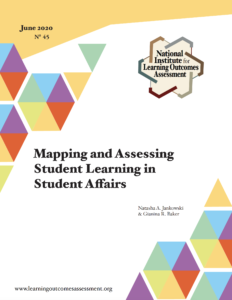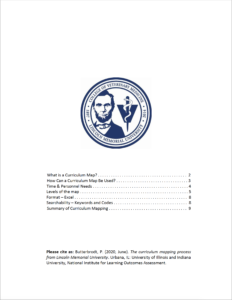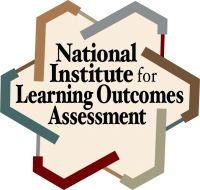Curriculum Mapping
NILOA’s Mapping Toolkit was developed alongside faculty and experts in the field to provide framing, tips, and insights into the process of mapping learning. The Mapping Learning Toolkit presents approaches to identify alignment with learning outcomes within program, co-curriculum, general education, employment, and elsewhere learning occurs. The Mapping Learning Toolkit provides resources for conducting meaningful “curriculum” mapping along with examples from institutions. Click on each banner to expand the selection and access resources.
Please cite as: National Institute for Learning Outcomes Assessment. (2018, March). Mapping learning: A toolkit of resources. Urbana, IL: University of Illinois at Urbana-Champaign, National Institute for Learning Outcomes Assessment (NILOA).
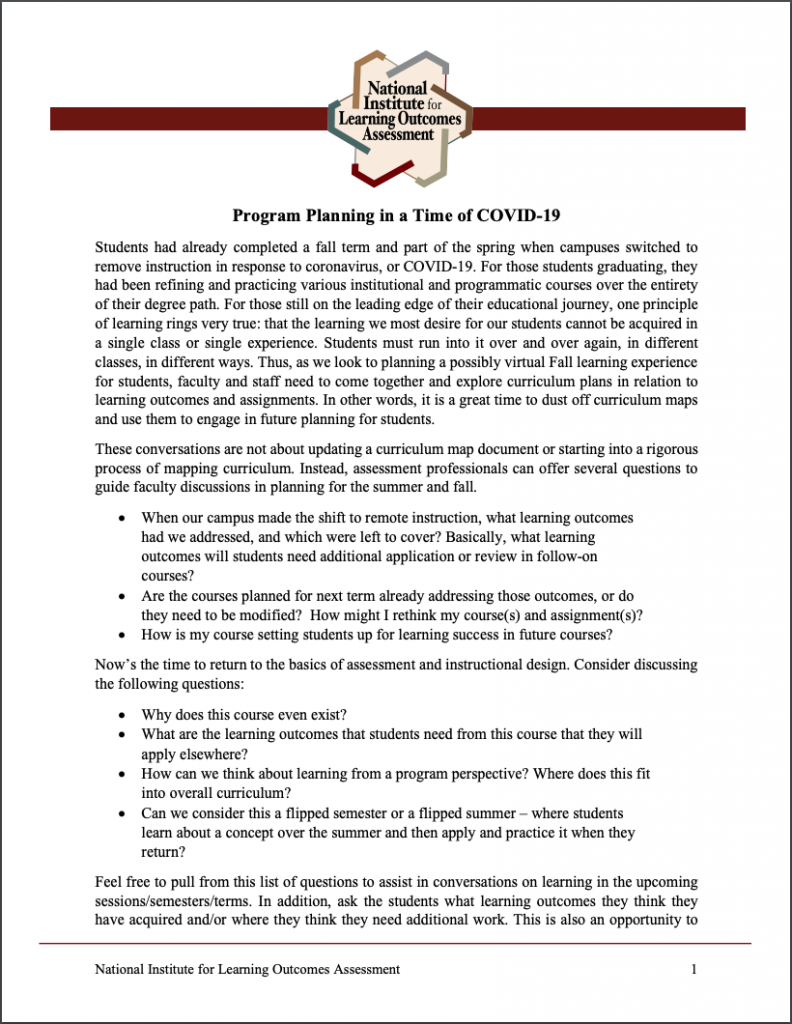 As we look toward planning a possibly virtual Fall learning experience for students, faculty and staff need to come together and explore curriculum plans in relation to learning outcomes and assignments. This resource offers framing questions and tips to guide Program Planning in a Time of COVID-19.
As we look toward planning a possibly virtual Fall learning experience for students, faculty and staff need to come together and explore curriculum plans in relation to learning outcomes and assignments. This resource offers framing questions and tips to guide Program Planning in a Time of COVID-19.
In supporting institutions to develop Comprehensive Learner Records, mapping learning, redesigning assessments, and creating assignments was a staple of practice. This resource provides examples and tools for mapping learning in student affairs as well as engaging in assessment design exercises. Read It!
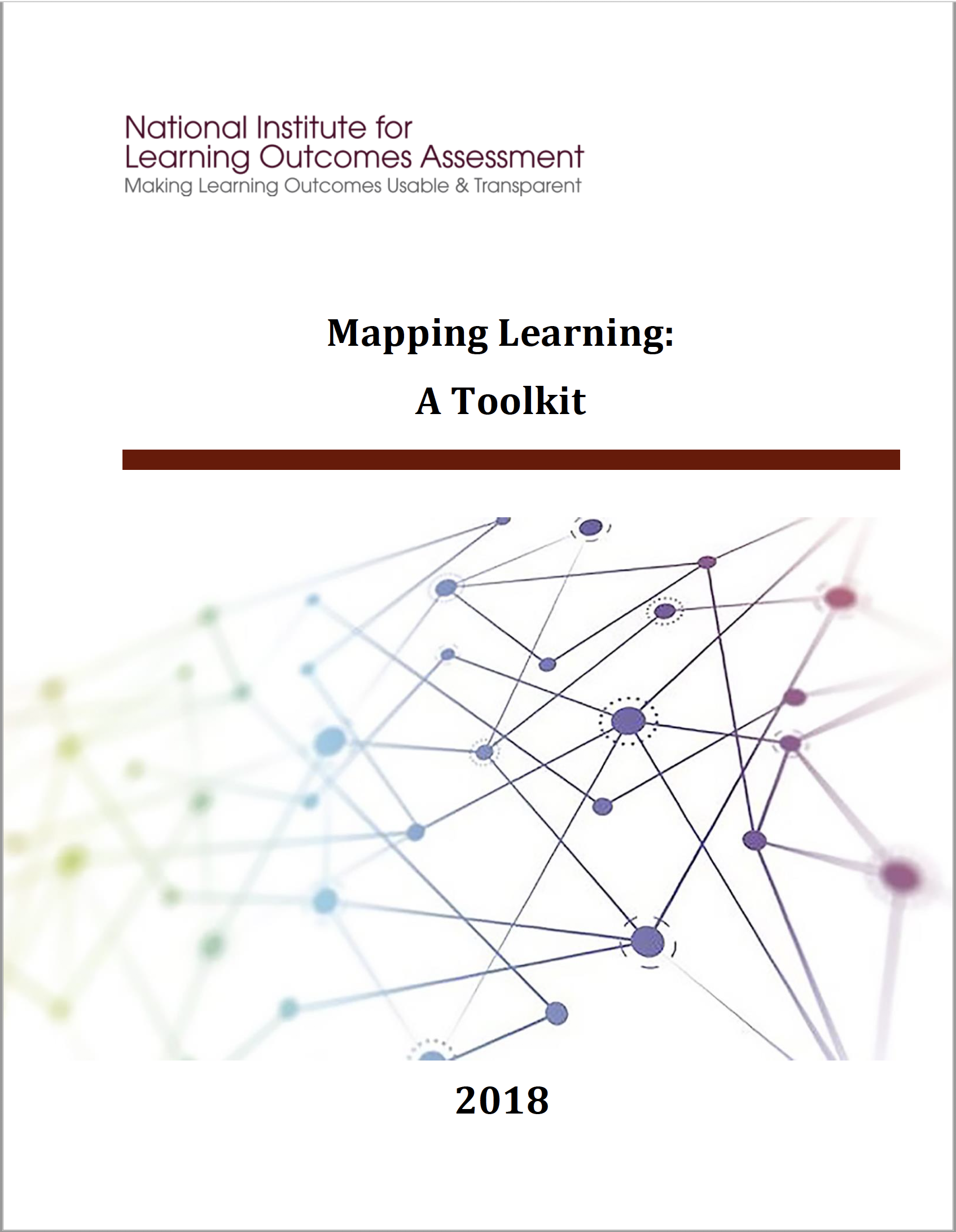 In this toolkit, we present a variety of information on the mapping process: what are the purposes of maps, how will they be used, what can be mapped along with various approaches to engage with mapping learning. We assume the focus of mapping is on documenting learning, but the approaches addressed here would be applicable with a different focus or lens as well.
In this toolkit, we present a variety of information on the mapping process: what are the purposes of maps, how will they be used, what can be mapped along with various approaches to engage with mapping learning. We assume the focus of mapping is on documenting learning, but the approaches addressed here would be applicable with a different focus or lens as well.
Example from Lincoln Memorial University’s College of Veterinary Medicine
The concept of a map indicates the user is searching for information and has gone to the map to locate the information needed, with different types and layers of information available in maps with different foci. Likewise, a curriculum map will look different from one user to another, from one school to another, from one university to another. There are multiple designs for a curriculum map, and depending on the information presented, a curriculum map can be very simple or quite complex. This example from Lincoln Memorial University offers a description of a multi-layered mapping process including the uses of mapping, resource needs, mapping levels, possible formats, and other important considerations.
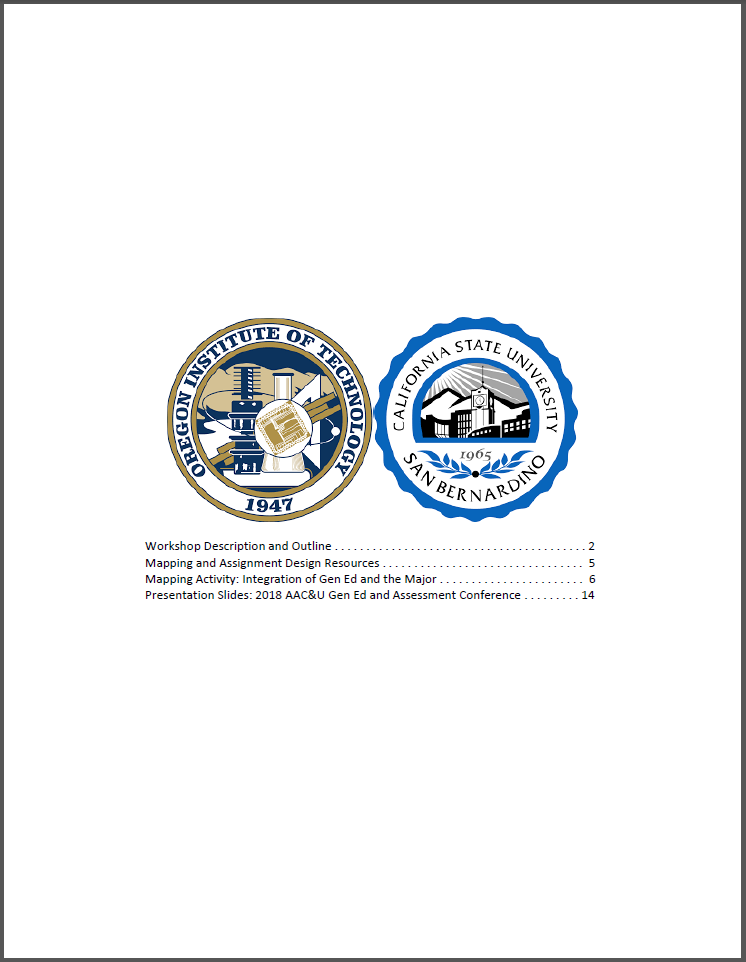 Example from the Oregon Institute of Technology & California State University – San Bernardino
Example from the Oregon Institute of Technology & California State University – San Bernardino
This workshop uses the Learning Systems Paradigm (Jankowski & Marshall, 2017), a framework to help participants reflect on the organization of their institution, how work might be accomplished within that organization, and whom they might involve in that work. The workshop outline and accompanying workbook guide facilitators and participants to use design thinking (Hasso Plattner Institute of Design at Stanford, 2016) in developing action plans to further work on their campus. Various resources are listed to assist in efforts to better align and integrate general education and the major; explore various approaches to curriculum mapping; and learn from national efforts to enhance the effectiveness of general education.
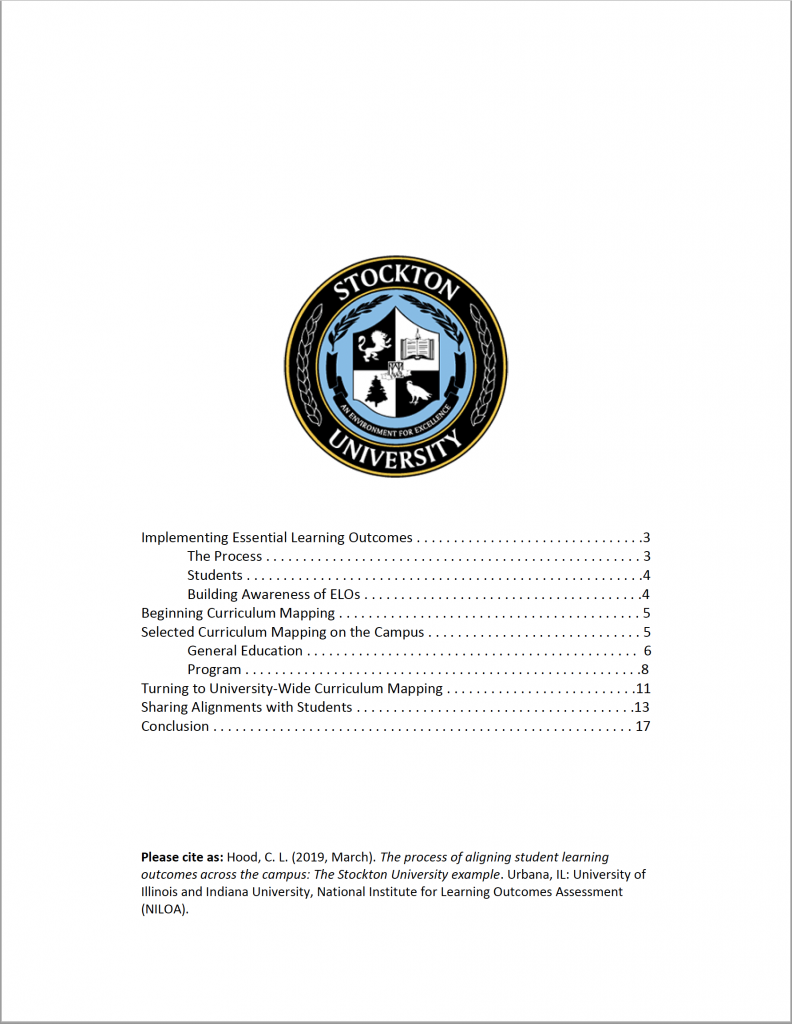 Example from Stockton University
Example from Stockton University
As campuses move forward in their assessment practices, they may confront a situation like the one faced by faculty at Stockton University. Assessment became cumbersome, at Stockton, with evaluation of student learning taking place at the course, program, and institutional level, with sets of outcomes developed overtime and not informed by the assessment taking place across the institution, with duplication of efforts, and with articulation of goals at the course and program level disconnected from the language of institutional outcomes. In 2010, when Stockton identified its ten essential learning outcomes (ELOs), the faculty had difficulty buying in because they perceived the ELOs an additional layer of outcomes that did not match their course and program goals. Others did not understand how to incorporate ELOs into their teaching and the assessment work they had already initiated. This example describes Stockton’s process of aligning student learning outcomes across the campus.

